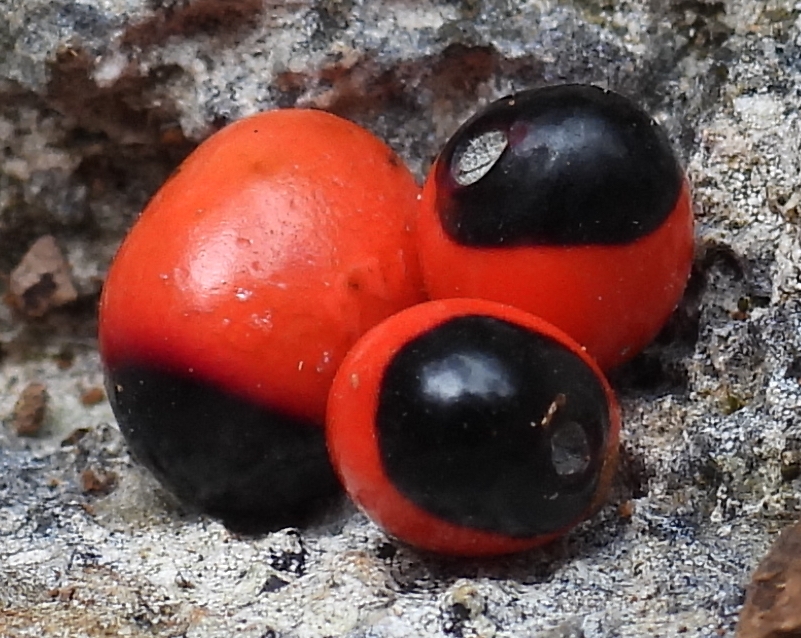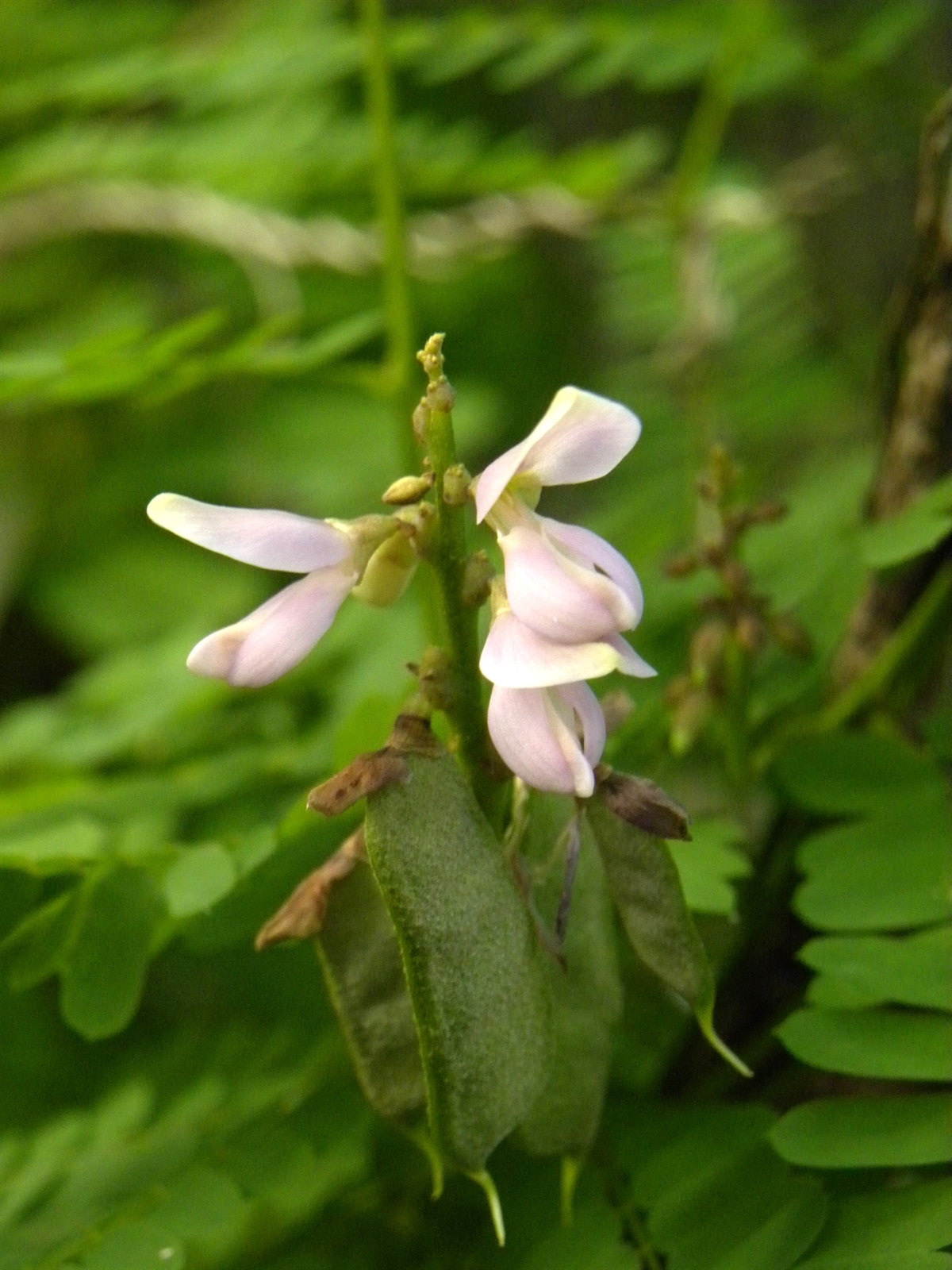Habit: Abrus precatorius grows as a climbing vine with a stem that becomes woody with age. The pinnately compound leaves are arranged alternately, to 15 cm long. The leaflets are in 8-15 pairs, to 2 cm long, oblong to obovate with a rounded or mucronate leaf apex and entire margin.
The zygomorphic flowers are arranged in terminal or axillary racemes. The calyx has 5, fused, green sepals. The corolla has 5 red/purple (sometimes white) petals. The upper 2 petals are fused to form a standard. The lower petal is folded to form the keel. There are 9 stamens that are monadelphous (fused along their filaments) and surrounding the carpel. The ovary is superior and has a single locule. The fruit is a legume at maturity. The seeds are bright red with a black spot.
Habitat: Abrus precatorius grows in Dry Broadleaf Evergreen Formation –Shrublands (scrublands) as well as Human Altered environments such as abandoned fields and houses.
Distribution: Abrus precatorius occurs in the central and northern island groupings of the Lucayan Archipelago, throughout the tropical and subtropical western hemisphere as well as tropical and subtropical Asia and Africa.
Medicinal/Cultural/Economic usage: The seeds of Abrus precatorius are highly poisonous!
The seeds should not be used for anything, and, if children are around, the species should be removed from yards!
Boiling the seeds breaks down the toxins and in areas of the Caribbean after boiling the seeds have been boiled with milk to form a tonic. The roots and stems are edible and taste like licorice.
It is advised NOT to use this species without having been given guidance by a knowledgeable bush medicine practitioner.


